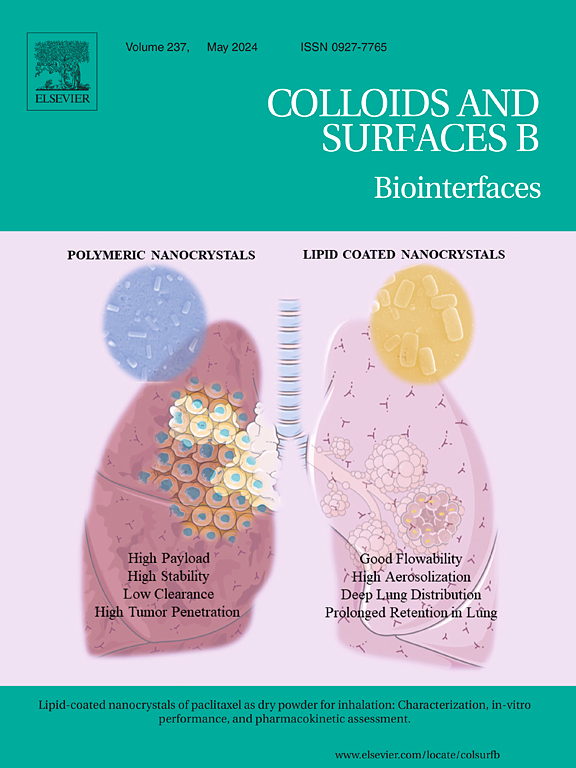Construction of a methacrylated gelatine composite hydrogel based on tachyplesin II and its application in the repair of infected wounds
IF 5.4
2区 医学
Q1 BIOPHYSICS
引用次数: 0
Abstract
Tachyplesin II (TP) is a β-folded peptide isolated from horseshoe crabs. TP, with two disulfide bonds, effectively inhibits gram-negative and gram-positive bacteria, fungi and viruses. In this study, the antibacterial and antioxidant properties of synthetic TP were examined. Specifically, TP was incorporated into cross-linked methacrylated gelatine (GelMA) to construct a GelMA-TP hydrogel, which promoted infected wound healing. TP formed intermolecular hydrogen bonds with the GelMA network, endowing the GelMA-TP hydrogel with good antibacterial activity, stable rheological properties, high swelling capacity, self-healing behaviour, and good biocompatibility. We found that the anti-inflammatory and antioxidant activities of the GelMA-TP hydrogel significantly enhanced collagen production, thus accelerating healing in a rat-infected wound model. Overall, the GelMA-TP hydrogel demonstrates significant potential to stimulate the healing of infected wounds by reducing healing time and improving tissue repair outcomes. These findings highlight its translational promise as a clinically effective material for managing complex wounds, particularly in scenarios where conventional therapies are limited by persistent infections or excessive inflammation.
求助全文
约1分钟内获得全文
求助全文
来源期刊

Colloids and Surfaces B: Biointerfaces
生物-材料科学:生物材料
CiteScore
11.10
自引率
3.40%
发文量
730
审稿时长
42 days
期刊介绍:
Colloids and Surfaces B: Biointerfaces is an international journal devoted to fundamental and applied research on colloid and interfacial phenomena in relation to systems of biological origin, having particular relevance to the medical, pharmaceutical, biotechnological, food and cosmetic fields.
Submissions that: (1) deal solely with biological phenomena and do not describe the physico-chemical or colloid-chemical background and/or mechanism of the phenomena, and (2) deal solely with colloid/interfacial phenomena and do not have appropriate biological content or relevance, are outside the scope of the journal and will not be considered for publication.
The journal publishes regular research papers, reviews, short communications and invited perspective articles, called BioInterface Perspectives. The BioInterface Perspective provide researchers the opportunity to review their own work, as well as provide insight into the work of others that inspired and influenced the author. Regular articles should have a maximum total length of 6,000 words. In addition, a (combined) maximum of 8 normal-sized figures and/or tables is allowed (so for instance 3 tables and 5 figures). For multiple-panel figures each set of two panels equates to one figure. Short communications should not exceed half of the above. It is required to give on the article cover page a short statistical summary of the article listing the total number of words and tables/figures.
 求助内容:
求助内容: 应助结果提醒方式:
应助结果提醒方式:


